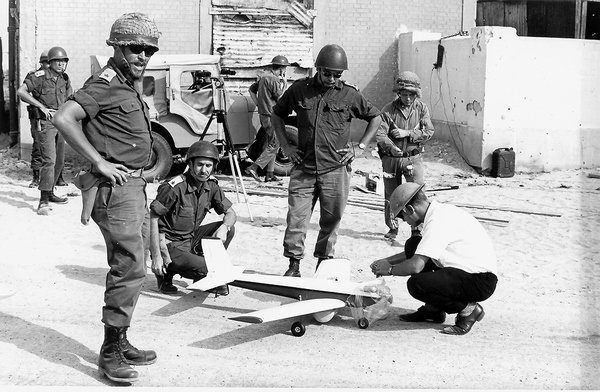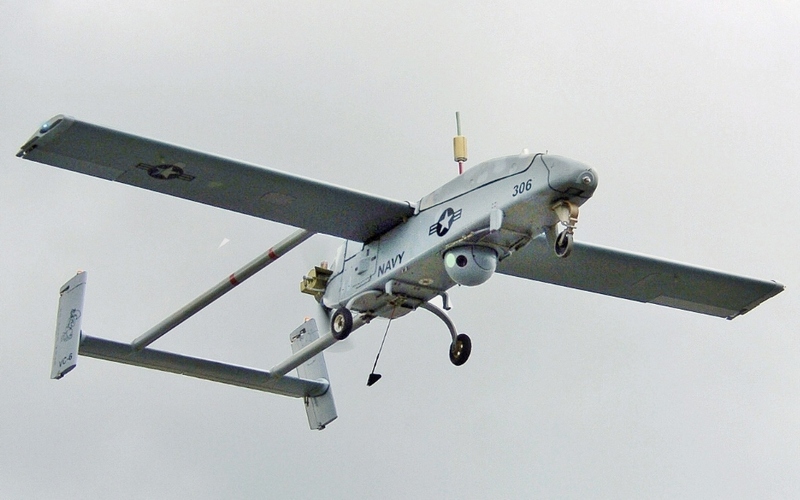Few days ago, I came across one interesting incident about origin of UAVs and how they developed in to the amazing machines we see everywhere now. This post is about development early surveillance UAVs (or drones as they are called now) and how they branched off from expensive ungainly remote controlled aircraft/missiles/target practice drones in to cheap and rugged machines they are now.
First military use of UAVs was done back in 1849 by way of balloons and later during WW1. But latter were little more than remote controlled planes carrying explosives, more like primitive cruise missiles or just target practice. USA did use some classified drones during Vietnam war, but they were not very successful with it.
First nation to find a proper niche for UAVs for surveillance and warfare was Israel. It started in 1968 when Israel and Egypt were on verge of war. Suez canal divided the two belligerents and both had erected static defences all along the common border. USSR was providing Egypt and a few other nations hostile towards Israel with highly lethal weapon systems in large numbers while Israel had no such benefactor. Egypt had created 25-30 feet high artificial sand banks to prevent any visual reconnaissance from Israeli side. At first, Israelis tried creating a platform mounted on tanks but enemy fire made them useless. Spy satellites were not that common, Israelis didn’t have any at that time and aerial reconnaissance using normal planes was just too risky due to strong air defenses on Egyptian side.
Shabti Brill, a major in IDF Military Intelligence came up with an idea to attach cameras to commercially available toy planes and use them to take pictures of Egyptian military buildup. At first Israeli Air Force refused to consider the idea. So he asked his commander who approved a budget of USD 850. It was used to buy three toy planes, extra engines, remote controls and some other spares from a toy store in New York. A member of visiting Israeli defence delegation bought all of this gear and sent it back in embassy’s diplomatic pouch. It was done this way to prevent any suspicion.

Once in Israel, these toy planes were fitted with German built 35 mm cameras timed to take pictures every 10 seconds.Before sending the planes for actual missions, Brill’s superiors wanted to do some trials. So the toy planes were shot at by Israeli air defence guns at altitudes ranging from 1000 feet to 300 feet, . Even with prior information about flight paths of the drones, the air defence guns couldn’t shoot them down. Impressed by the results, these planes were immediately sent on their first reconnaissance mission in July 1969, which they successfully completed. There was some minor drama but the pictures taken by these planes uncovered defensive preparations being done by Egypt and later Jordan too.
One would think that everyone in Israel would’ve realised the utility of these UAVs right then and started their development and induction in earnest. But Israelis share a few traits with us. Brill was promoted and he left others in charge of this project who completely bungled the development of new models. After repeated crashes, the whole project was shelved only a few months later. Strong protests by Brill were ignored.

A wake up call came up with war of 1973, in which Israel barely managed to hold on to their territory with 2000+ causalities. The surprise attack by Egyptians on western and by Jordanians on eastern front shocked everyone in Israel. It was more than evident now that Brill was right and the decision to stop work on UAVs was quite foolish. His plans were again pulled out of storage and development of new drones started again. First one to enter service was Scout. It was it’s first trial by combat in 1982, where it’s electronic warfare and reconnaissance capabilities were instrumental in destroying the formidable Syrian SAM network and shooting down of 82 enemy jets without any loss.
Americans had their own drone programs, but none was successful even after spending nearly a billion dollars. So they turned to Israel to help them develop a better version of Scout, called Pioneer. Deliveries started in 1986 and these drones saw their first use in Iraq. This war also had the first incident of human soldiers surrendering to a machine when a group of Iraqi soldiers panicked and waved their white under-shirts after noticing it flying over their heads.Now everyone knows about sophisticated military drones like Predator, Heron, Global Hawk. Many of the people who will read this would have flown smaller drones just for fun. But it’s always good to know how it all started.

A lot of people think that Israeli military is financed by Americans. It is partially true now, but it was not always like that. After the creation of Israel, not a single country was willing to sell them any weapons, let alone provide them any kind of aid. They had to make deals with arms smugglers, scrounge for usable machines in scrap yards, even steal from many countries. They had other nations back out of signed deals and deal with outright refusals after long negotiations. As a poor fledgling nation, they had Israeli civilians and sometimes foreigner Jews finance their defence purchases. Yet their conditions forced them to be innovative, make the best out of every situation and strive for indigenisation at all costs. There was just no other alternative.
Now after decades of hard work and focus, they are making some of the best military equipment on planet and are one of the largest exporters. Their achievements in civilian technology is no less impressive, but that’s a topic for another post.The anecdote above is just one of the many others which sheds some light how they managed to develop numerous different successful systems with so few resources.
SOURCES:
- The Weapon Wizards: How Israel Became a High-Tech Military Superpower
- Images from Wikipedia
Leave a Reply